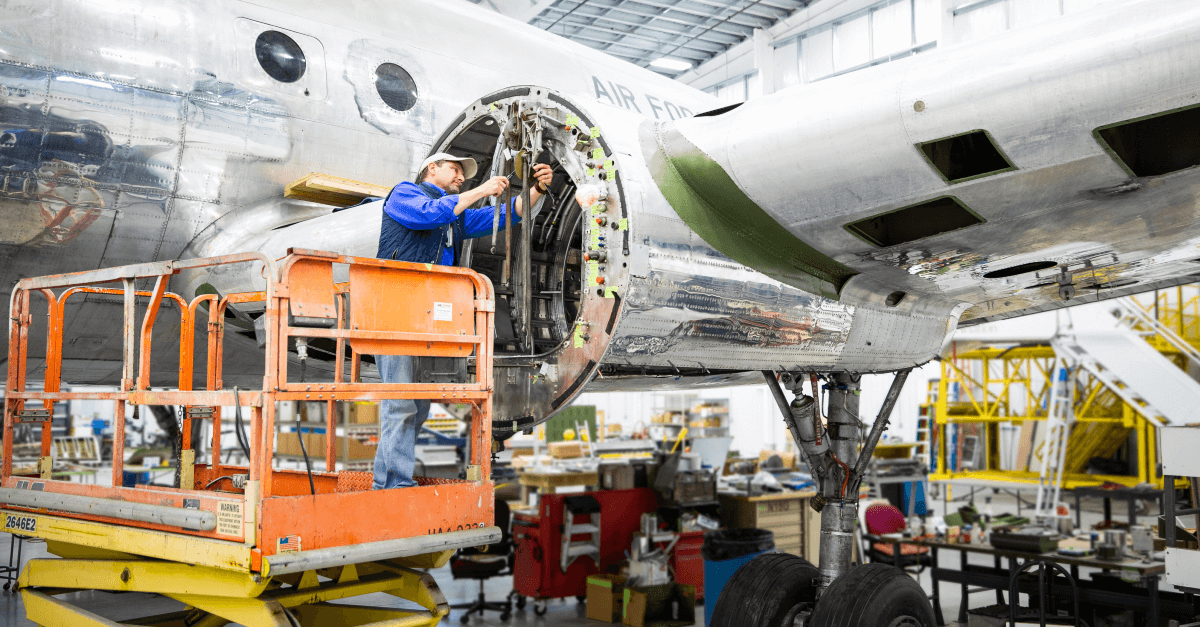Why Aviation Mechanic Jobs Are on the Rise
Aviation mechanics — or A&P mechanics — experienced a couple of the most tumultuous years in recent memory. The COVID-19 pandemic led to travel restrictions, resulting in a significant decline in the number of commercial flights. Reduced commercial and business travel led to furloughs and other workforce reductions.
Currently, commercial travel is returning to 2019 levels. People are traveling more, and consumer spending is driving an increase in cargo flights. With more planes in the air, the demand for aviation maintenance professionals is rising. This is leading to an abundance of opportunities and new ways for aviation mechanics to advance their careers.
We spoke with Business Development Executive Damien Dominguez and Practice Lead Michael Del Bianco, who both have extensive experience in the aviation industry and over 20 years of combined experience in recruiting. They provided a few additional reasons aviation mechanics should be optimistic about their future.
Retirements Are Opening Doors for Aviation Mechanics
It’s well known that the Baby Boomer generation is leaving the workforce in droves. This wave of retirements is impacting nearly every industry, and aviation is also suffering from a skills gap.
“There were a lot of mechanics early in the 1970s when aviation was first booming. Many of those early mechanics are starting to retire or have already retired. What’s exciting for those mechanics coming up is the opportunity for advancement,” says Dominguez.
This creates a situation where there are numerous open supervisory or management roles, but with a limited number of people possessing the necessary skills to fill them. Now is the perfect time for ambitious aviation mechanics to focus on their skills, goals and interests. Understanding these three things will help clear the path towards filling leadership positions.
Strong demand is improving wages and benefits
Not every aviation mechanic may be able to start taking on leadership roles. You may be more concerned about finding the right place to hone your skills. The surge in demand has caused many companies to expand their search for experienced mechanics. They’re also increasing wages and improving benefits to draw in top talent.
“Salaries are rising, and sign-on bonuses are becoming more common. Hourly workers can also take advantage of rising wages with bonuses for working off-shift hours,” says Del Bianco.
If you aren’t tied to a specific location, explore options with companies that have multiple worksites. Major manufacturers or commercial airlines often have multiple locations where you can gain exposure to new aircraft and technology.
Aviation mechanic jobs now offer:
● Competitive hourly wages and overtime
● Sign-on and relocation bonuses
● Exposure to advanced aircraft technology
● Opportunities across multiple states and sectors
If you're flexible on location, Aerotek can connect you with companies that operate MRO facilities across the U.S., including North Carolina, Texas and Illinois.
“A lot of clients that we work with have multiple locations. They might have an MRO (maintenance, repair and operations) in North Carolina, another in Texas, and another in Illinois. If you’re open to relocate, you’re going to give your career more upward mobility,” states Dominguez.

Aviation Mechanic Job Description: What You’ll Do
Aviation mechanics perform inspections, repairs and preventive maintenance on various types of aircraft. Here's a typical breakdown of job responsibilities:
● Inspecting aircraft systems and components for wear or damage
● Diagnosing mechanical or electrical issues
● Replacing parts and conducting routine maintenance
● Maintaining service records in compliance with FAA regulations
● Working with commercial, cargo or military aircraft fleets
Explore Aviation Mechanic Jobs With Aerotek
If you’re a current aviation mechanic or if you’re currently working towards certification, there are a multitude of reasons to be optimistic. Dominguez offered some advice for all mechanics during aviation’s resurgence.
“Take your time. There are a lot of opportunities being put in front of people. The big thing is to know your goals, skills and interests. At Aerotek, we’ve got plenty of opportunities across all facets, but we’re really going to guide you based on your goals, skills and interests,” says Dominguez.
Happy National Aviation Day, and if you’re an aviation or A&P mechanic looking for your next opportunity, check out our current openings.
